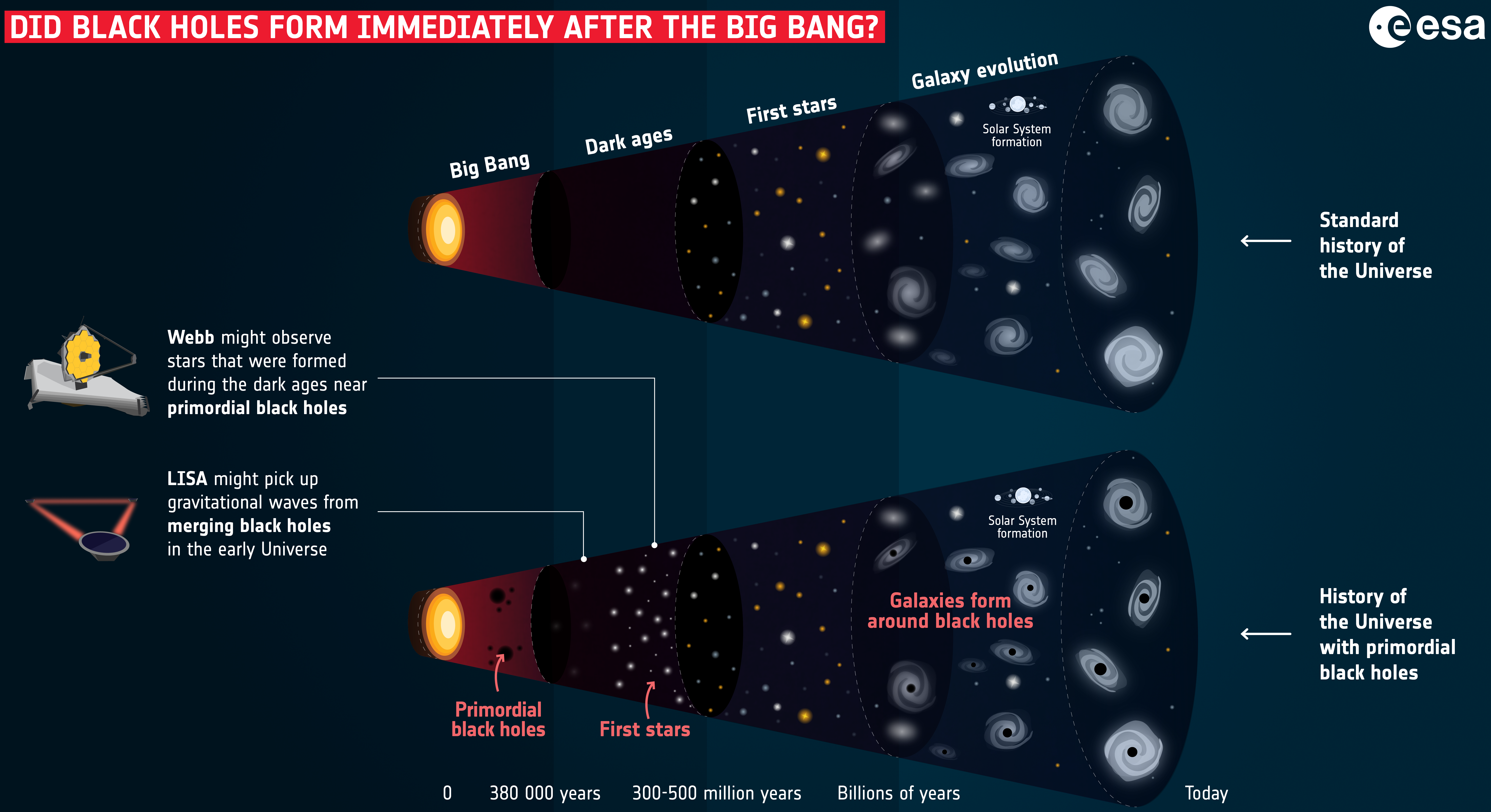|
Hypothetical Black Hole (other)
Hypothetical black hole may refer to: * Micro black hole, a microscopic black hole proposed to have formed in the early universe * Intermediate mass black hole, a black hole of a mass between a stellar mass black hole and a supermassive black hole * Direct collapse black hole: a black hole formed from the collapse of hydrogen, rather than from a star * Primordial black hole, a black hole that might have formed in a similar fashion to a star during the Universe's earliest epochs * Extremal black hole, the smallest possible black hole that could exist while rotating at a specific speed * White hole, the opposite of a black hole; a white hole continuously expels matter {{dab ... [...More Info...] [...Related Items...] OR: [Wikipedia] [Google] [Baidu] |
Micro Black Hole
Micro black holes, also called mini black holes or quantum mechanical black holes, are hypothetical tiny (<1 ) , for which effects play an important role. The concept that black holes may exist that are smaller than was introduced in 1971 by Stephen Hawking. It is possible that such black holes were created in the high-density environment of the earl ... [...More Info...] [...Related Items...] OR: [Wikipedia] [Google] [Baidu] |
Intermediate Mass Black Hole
An intermediate-mass black hole (IMBH) is a class of black hole with mass in the range 102–105 solar masses: significantly more than stellar black holes but less than the 105–109 solar mass supermassive black holes. Several IMBH candidate objects have been discovered in our galaxy and others nearby, based on indirect gas cloud velocity and accretion disk spectra observations of various evidentiary strength. Observational evidence The gravitational wave signal GW190521, which occurred on 21 May 2019 at 03:02:29 UTC, and was published on 2 September 2020, resulted from the merger of two black holes, weighing 85 and 65 solar masses, with the resulting black hole weighing 142 solar masses, and 8 solar masses being radiated away as gravitational waves. Before that, the strongest evidence for IMBHs comes from a few low-luminosity active galactic nuclei. Due to their activity, these galaxies almost certainly contain accreting black holes, and in some cases the black hole masses ca ... [...More Info...] [...Related Items...] OR: [Wikipedia] [Google] [Baidu] |
Direct Collapse Black Hole
Direct collapse black holes are high-mass black hole seeds, putatively formed within the redshift range 15 Formation Direct collapse black holes (DCBHs) are massive black hole seeds theorized to have formed in the high-redshift Universe and with typical masses at formation of ~, but spanning between and . The environmental physical conditions to ...[...More Info...] [...Related Items...] OR: [Wikipedia] [Google] [Baidu] |
Primordial Black Hole
Primordial black holes (also abbreviated as PBH) are hypothetical black holes that formed soon after the Big Bang. Due to the extreme environment of the newly born universe, extremely dense pockets of sub-atomic matter had been tightly packed to the point of gravitational collapse, creating a primordial black hole that bypasses the density needed to make black holes today due to the densely packed, high-energy state present in the moments just after the Big Bang. Seeing as the creation of primordial black holes pre-date the creation of known stars, they can be formed with less mass than what are known as stellar black holes. Yakov Borisovich Zel'dovich and Igor Dmitriyevich Novikov in 1966 first proposed the existence of such black holes, while the first in-depth study was conducted by Stephen Hawking in 1971. However, their existence has not been proven and remains theoretical. Theoretical history Depending on the model, primordial black holes could have initial masses rangi ... [...More Info...] [...Related Items...] OR: [Wikipedia] [Google] [Baidu] |
Extremal Black Hole
In theoretical physics, an extremal black hole is a black hole with the minimum possible mass that is compatible with its electric charge, charge and angular momentum. The concept of an extremal black hole is theoretical and none have thusfar been observed in nature. However, many theories are based on their existence. In supersymmetric theories, extremal black holes are often supersymmetric: they are invariant under several supercharges. This is a consequence of the BPS bound. Such black holes are stable and emit no Hawking radiation. Their black hole entropy can be calculated in string theory. It has been suggested by Sean M. Carroll, Sean Carroll that the entropy of an extremal black hole is equal to zero. Carroll explains the lack of entropy by creating a separate dimension for the black hole to exist within. The Hawking radiation of extremal black holes are considered non-thermal (non-Planck distributed), with no associated temperature. The hypothetical black hole electro ... [...More Info...] [...Related Items...] OR: [Wikipedia] [Google] [Baidu] |
.jpg)

